EXTINCT SPECIES --- How we lost them.
We've got amazing huge animals which have graced the mother earth, while some has left, we still have some still in active service. You have virtually seen this huge, thick-skinned big headed, dual-horned land animal, either on paper, television, the internet, live or in your imaginations (don't mind me).
Amongst the land's giant animals is the Western Black Rhinoceros. This Rhinoceros is one of the subspecies of its kind, stamping its authority over its territory with in a placid manner but with so much vigour. Sadly, it has been declared extinction by the IUCN after efforts made to rescue the declining population of this animal failed.
We'll be taking a look at the Western Black Rhinoceros, how they fed, their fight for survival and reasons for their extinction!
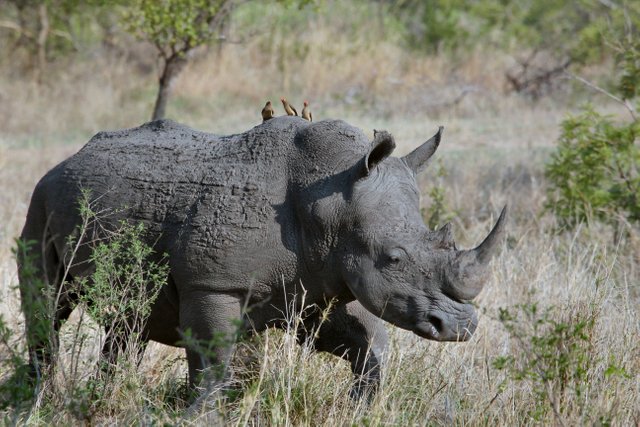
Source: Pxhere - Western Black Rhino
Just as we all know the western black rhinoceros comes from Kingdom Animalia, scientifically is classified under the phylum Chordata, class Mammalia, the order Perissodactyla and family of the Rhinocerotidae. Digging deep down, genus is Diceros, species is D. bicornis and subspecies D. b. longipes.
From fossil record, the western black rhinoceros (Diceros bicornis longipes) or West African black rhinoceros existence dates back to the prehistoric times; about 7 to 8 million years ago. About the year 1990, we had a teeming population of the Black Rhinoceros with some numerical recording above a million individuals in general. However, in 1995, their total population reduced to about 2,400 due to incessant poaching. Though the numbers rose approximately to 4,800 thanks to the conservation efforts being put in place.
Now, Black rhinoceroses manage a much smaller area, with quite a majority of them well-guarded in parks and reserves and a few of them randomly distributed (their future seeming critically in great danger). The three remaining species can still be found in African countries like Angola, Botswana, Kenya, Malawi, Mozambique, Namibia, South Africa, Swaziland, Tanzania, Zimbabwe and Zambia. Permit me mention them here:
Eastern Black Rhino (Diceros bicornis michaeli) - In Kenya, having small numbers in Tanzania. Secondly is the Southern-central Black Rhino(Diceros bicornis minor)- In South Africa with minute numbers in Tanzania and Zimbabwe. Lastly, is the Southern-western black rhino (Diceros bicornis bicornis)- In Namibia and lesser extent in South Africa.
Genetically, the western black rhinoceros was believed to be rare from other rhino subspecies and had its spread evenly in the savanna of sub-Saharan Africa, principally pitching their tents in Cameroon. Yes, its range extended westward cutting across the savanna zone through Like Chad, Burkina Faso, Côte d'Ivoire, northern Nigeria and Guinea possibly had a share. But since 2006, surveys made to locate any individuals proved abortive with no sight of their feaces or grazing marks. This led to the formal declaration of the western black rhinoceros as extinct by the IUCN (International Union for Conservation of Nature) in 2011. What a lose!
PHYSICAL FEATURES
Why don't we check out the physical attributes that made it unique. You'll be certainly amazed.
The Horns
Of special note is the horns of the Rhino; consisting of millions of hair-like fibers which are tightly and beautifully compact.
The black rhino has two horns on its snout which lie parallel to the dorsal side of its head and growth can be up to 3 inches (that's 8 centimeters) in a year.
The anterior horn is the largest and prominent of the two both in size and length -50cm on the average- while the posterior is far smaller. Sometimes, a third is visible. The horn is formed by keratin(a fibrous protein) as the calf grows into maturity and is by no means attached to the skull.
This simply means it still grows back even when trimmed or cut just like our fingernails. As soon as this was known, the illegal poaching of rhino gained more footing.
These horns were used by them to protect themselves and their you ones as you would have rightly guessed. Although the front one was the largest, you remember, females had longer and thinner horns than the males.
It also has high ornamental value and was used in the handles of certain weapons like the Asian dagger. Also its medicinal uses can't be left aside (we're gonna see that soon).
Skin
In real sense, the black rhinos are not actually black. Quite surprised? Their skin colour varies from pale grey to dark brown to dark grey and is greatly influenced by the colour of the local mud in which it wallows. Their habitat also a factor affecting their skin colouration. Although they are mammals, their skin is hairless except for the short hairs located on their ears, eyebrows and tail.
Size and Weight
As we may know, the Black Rhinoceros are huge land mammals. Though they are smaller than the white rhinos. It's male are slightly larger than the female counterparts and at shoulder height measuring between 55-71 inches (1.4 to 1.8 meters). Can you stand that?
Their head and body length is between 9.8 to 2.5 feet (3 - 3.75 meters) and its weight varies between 1,764 and 3,086 lb (800 to 1,440 kg).
Dentition
The Black Rhinoceros did not have any need for incisors or canines, reason being its diet of fresh juicy leaves and fruits.
It only has the molars which are powerful enough to crush the food. The dental formula reveals canines: 0/0, incisors 0/0, premolars 3/3 and molars 3/3 having a total of 24 teeth.
What the fed on
The Black rhinos are browsers(they eat from higher bushes or trees). Before we continue, learn that the White Rhinoceros has a square upper lip, the Black Rhinoceros has a pointed (prehensile) upper lip. This is a distinct feature, coining the name; hook-lipped rhino as an alternative. It was used for the grasping and pulling of leaves, stalks and fruits from bushes, long grasses trees. Prior to maturity the calves are catered for, remember they are mammals.
Also they fed of woody plants and a some blends of herbaceous plants, having a particular liking for acacias. Do you know that they could survive five good days without consuming water?
Distinctive characteristics
As we've initially noted, the black rhinos are smaller than the white rhinos, and have less of a pronounced hump on the back of their necks. They have a smaller head also and because they are browsers, they have less muscle strength around their head. The Western Black rhino had a poor eyesight and could vaguely notice a body standing 30 metres away but they had excellent sense of smell and hearing, I believe it was to compensate for their vision.
HOW WE LOST THEM
"Demographically and genetically the western black rhino seems doomed unless the discrete populations are captured and concentrated in one are of its range. Under current conditions, however, this would probably make the remaining animals more venerable to poaching." -World Wide Fund for Nature (1999). Source
The difference recorded in a century won't be forgotten do easily by the Rhinoceros and the Perissodactyls in extension. An estimate of one million black rhinos from the four different subspecies wandered the savanna of Africa, in the 20th century. That number drastically declined to about 2,300 in total and had just three subspecies left. This reveals how the display of greed, indifference, hope and despondency led to the extinction of one of these subspecies, the Western Black Rhinoceros.
According to history, the western black rhino occupied a vast land mass across central and western Africa.
Just like most rhinos, several factors made the hook-lipped rhino incompatible with the 20th century. Initially, was the attack through widespread sports hunting. Population of the rhino was rapidly decimated inthe first decades of the century merely for the fun created. You can imagine!!
Next came industrial agriculture, this led to the clearing of many historic habitats for extensive farm settlements and fields. Then farmers had a selfish view of large herbivores including the rhino, they were seen as pests and crop threats. And so continued the massacre.
In the early 1950, Mao Zedong who was the Chinese leader at the time thought of a tool to consolidate and the country. He came up with the promotion of the Traditional Chinese Medicine (TCM) although he didn't believe in TCM, but he called for its sustenance over Western medicine- This was the final straw which broke the camels back. Of the many cures paraded by China's "New Medicine", the rhino horn powder ranked high. It was believed to cure a vast range of diseases and even in the detecting of poisons (due to its high alkalinity content).
When poachers descended on Africa
It is sad that of all black rhinos predators, humans were the most dangerous to them. Although all rhinos suffered from this but due to the effect of overhunting over the years, the western black rhino had the greatest hit.
Let's know what happened between 1960 and 1996. During that period, poachers killed for commercial demand of the black rhinos horn. it was either for the new Traditional Chinese Medicine or for ceremonial knife handles used in the Middle East. We lost a whooping 98 percent of them. That's alarming.
This trend continued and was detrimental to their survival. By 1980, the western black rhinos range had shrunk to just two countries: Cameroon had 110 animals remaining while Chad was left with just 25. Sadly, Chad's western blacks were utterly wiped out within 10 years. Though Cameroon's resisted a little bit about, the population dropped from an appraised 50 western black rhinos in 1991, to just 35 the next year and to an estimated 10 final rhinos in 1997.
When you say 10, it sounds as though we've got a handful but I tell you, that number doesn't fully convey the unstable and unsecured nature of the subspecies at that point. The 10 last western black rhinos in northern Cameroon were distributed across 25,000 square kilometers. It was observed however that, four of them resided close to one another while the remaining six scattered, having 60 kilometers distance apart from each other on the average.That's little or no hope of finding a mate to start breeding.
The challenge of preserving these remaining 10 looked insurmountable as the act of finding, capturing an keeping these rhinos in one place would have been expensive and logistically impossible. Cameroon -which Sood as the last hope- was under the siege of civil unrest, currency devaluation, corruption and mistrust of the West. The future of these subspecies looked very bleak.
In 2001, another WWF (World Wide Fund for Nature) survey found just five survivors of the western black rhinos, and hopefully three additional, though not confirmed. That was the last time man ever saw a western black rhinoceros.
And they were right.
Fake Hope
Something happened in 2004, though things looked gloomy at that point, there was a glimpse of hope. That year, Symbiose, a non-governmental organization discovered by observations that they were some western black rhinos living in Cameroon, about 31 of them. Upon verification, the evidence was disproved. It turned out that trackers had faked footprints of the rhino as a ploy to save their jobs.
When the symbiose team returned to Cameroon, the conducted over 46 field surveys in the within six months in the year 2006. Simultaneously, the Cameroon Ministry of Forestry and Wildlife and even the WWF were conducting theirs. Overall, it wasn't an easy task. they were faced with challenges from nonexistent or poorly maintained roads to limited access to vehicles(most times unreliable) to travel attacks by armed bandits. Wherever they went ,the saw and evidences proving illegal of other wild species, some wounded, some trapped and others dead. The poaching pressure index was high -over 2.22- even in the area classified as national park.
Tragically, although the team sent had several accounts of isolated living rhinos in that area, no western black rhino was actually found in existence from all the surveys conducted.
That same year, a paper was published on Pachyderms. In a statement, a conclusion was drawn that around 2003, the subspecies was poached excessively and probably were extinct.
Expectations were high, buy no rhinos ever surfaced. With no findings over a decade, the International Union for Conservation of Nature officially declared the extinction of the western black rhino in 2011.
Let's quickly note that the Javan rhino is also extinct with other subspecies like Sumatran rhino, northern whitr rhino down to their aged and non-breeding adults. They are critically endangered.
MY THOUGHTS
Will we learn from lessons passed from the extinction of the western black rhino? I think, yes. Although the subspecies vanished from the earth over a decade now, many people are just getting to know about that. Maybe, just maybe this will cause people to care for the remnants of the rhino species, and take corresponding actions before they, too, are gone. Let's all join in protecting the remaining of this nature blessed mammal and any other endangered species. It's quite unfortunate that most extinct animals were lost majorly through the selfish actions of man toward them. Imagine you were any of them, that feeling, that hatred.
I believe you've had a great time with this piece. For more of this series, kindly click the follow button. Feel free, share your thoughts in the comment section.
Till next time, be cool.

REFERENCES
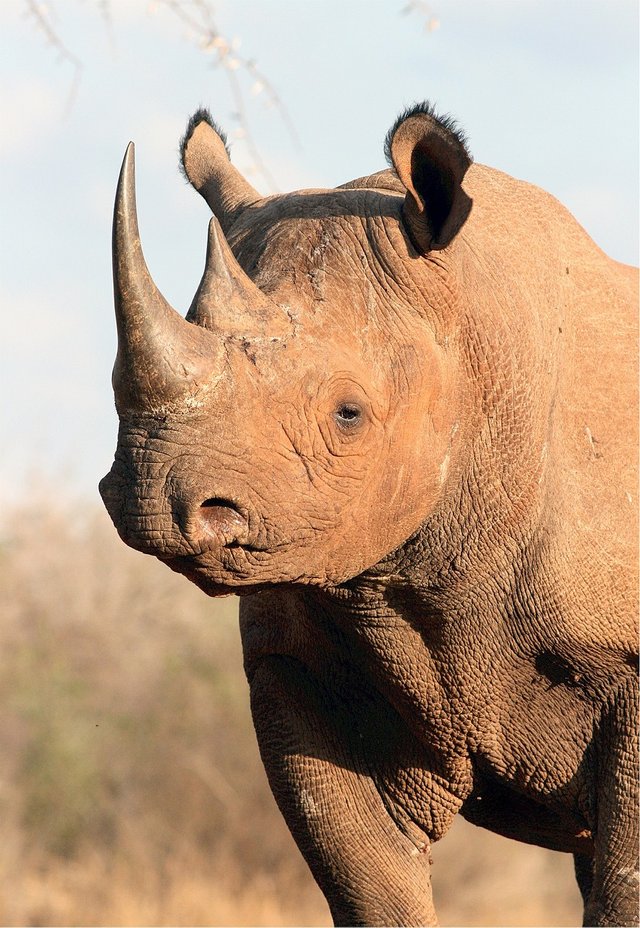
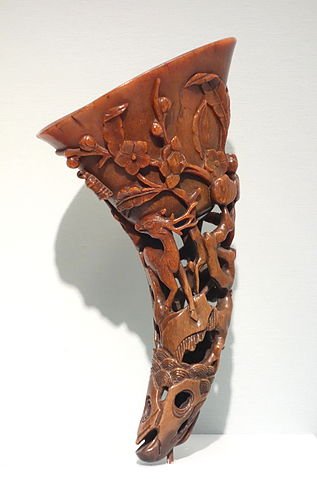
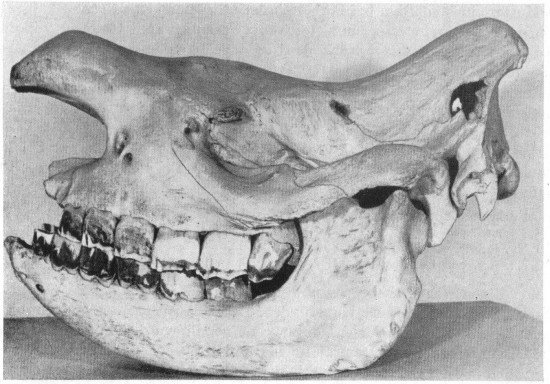
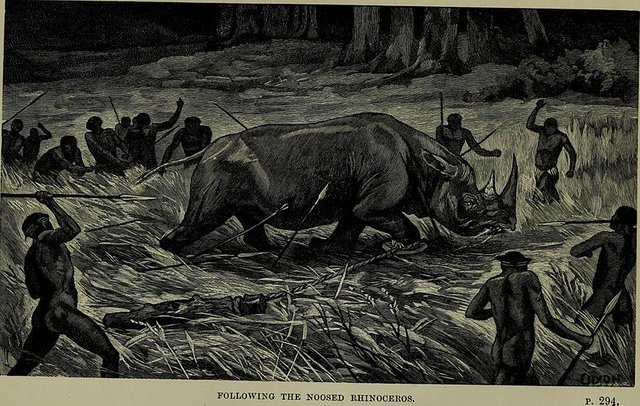
Congratulations @bright1! You have completed some achievement on Steemit and have been rewarded with new badge(s) :
Click on any badge to view your own Board of Honor on SteemitBoard.
For more information about SteemitBoard, click here
If you no longer want to receive notifications, reply to this comment with the word
STOPCongratulations @bright1! You received a personal award!
Click here to view your Board
Congratulations @bright1! You received a personal award!
You can view your badges on your Steem Board and compare to others on the Steem Ranking
Vote for @Steemitboard as a witness to get one more award and increased upvotes!